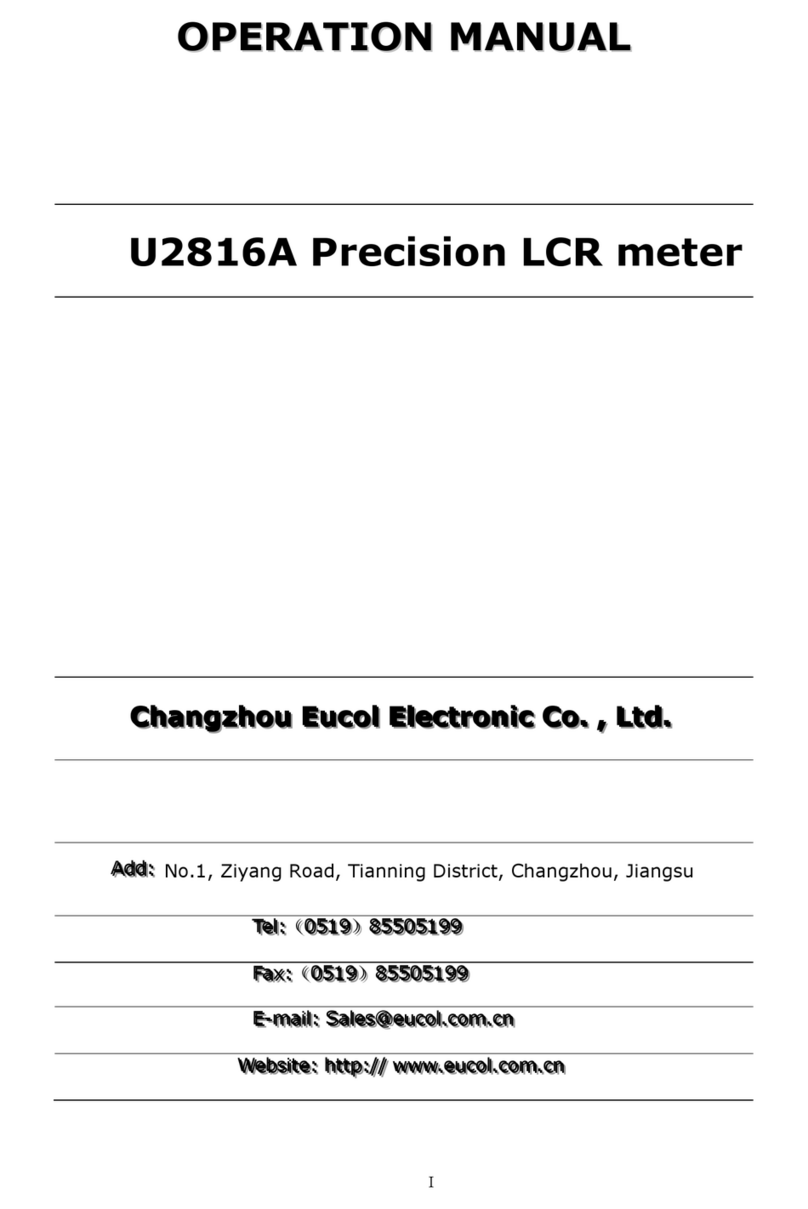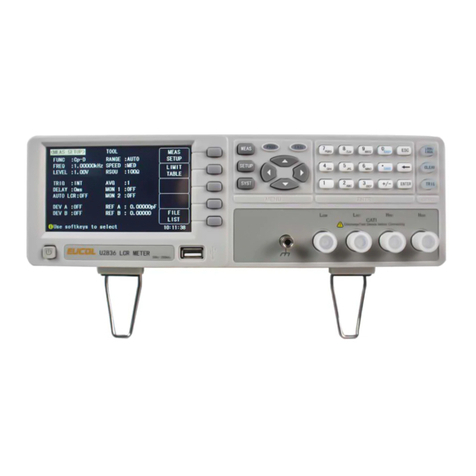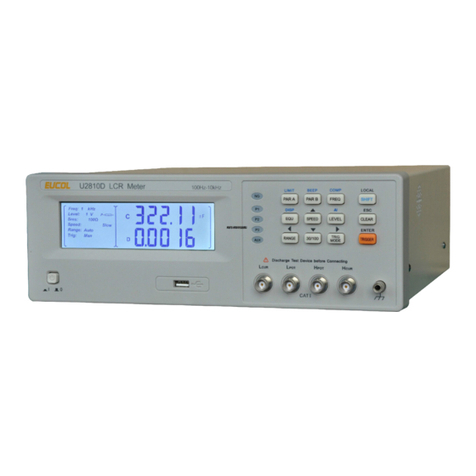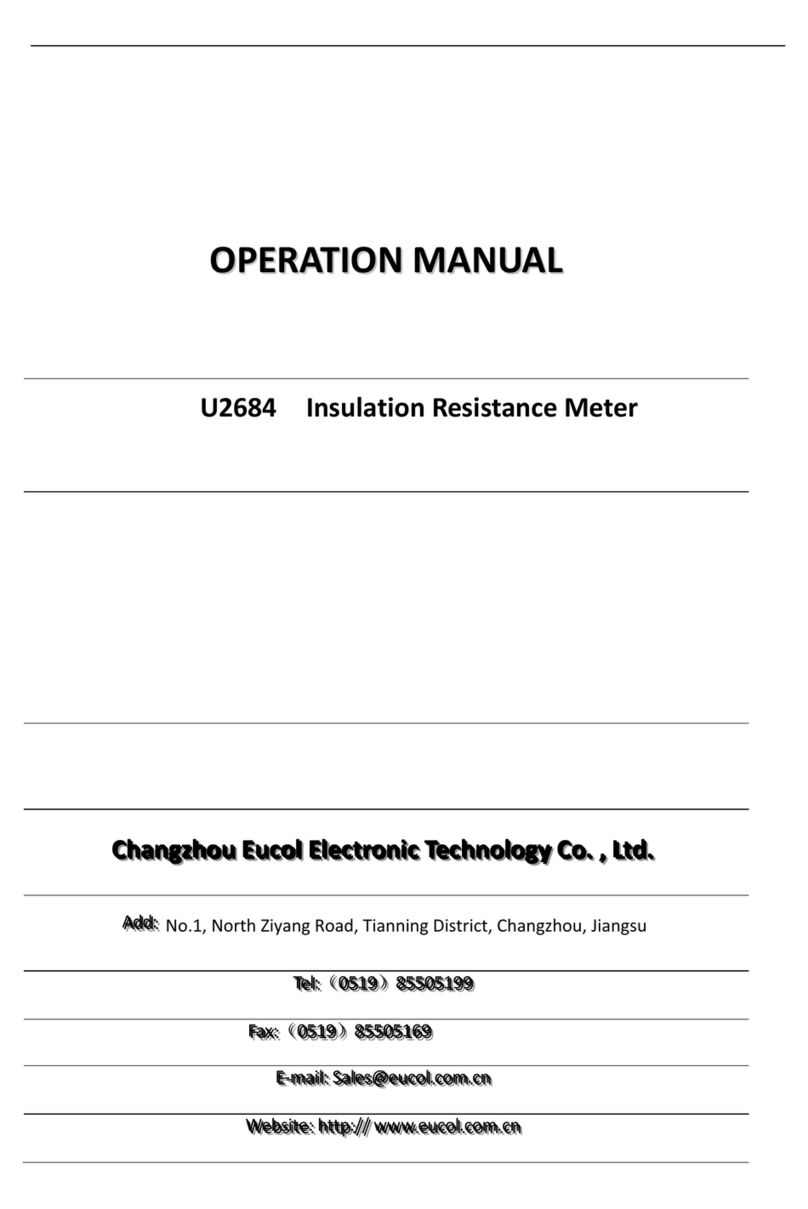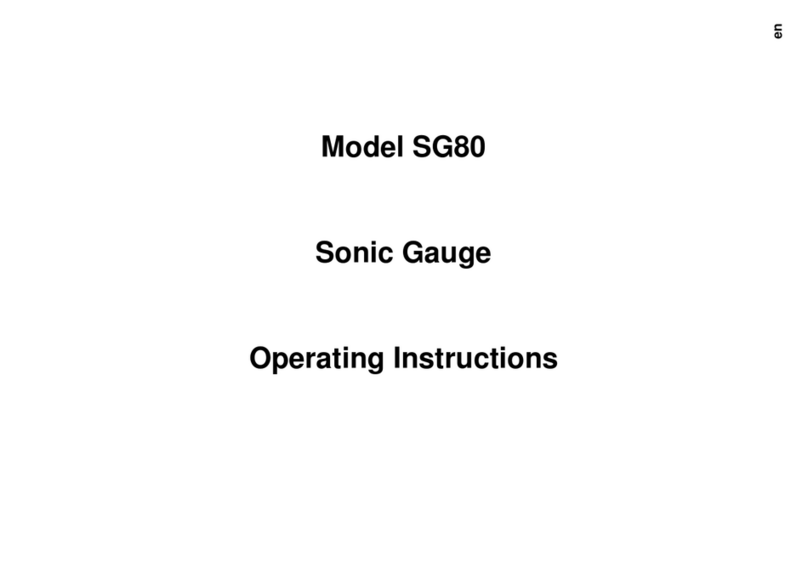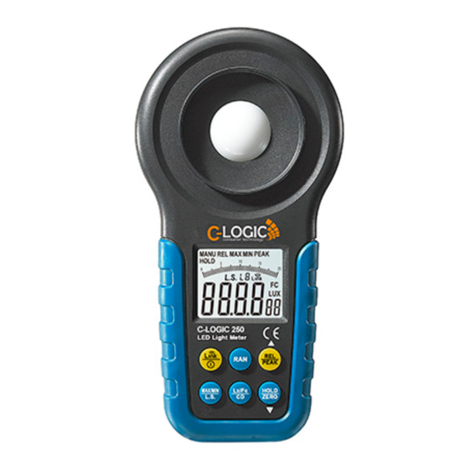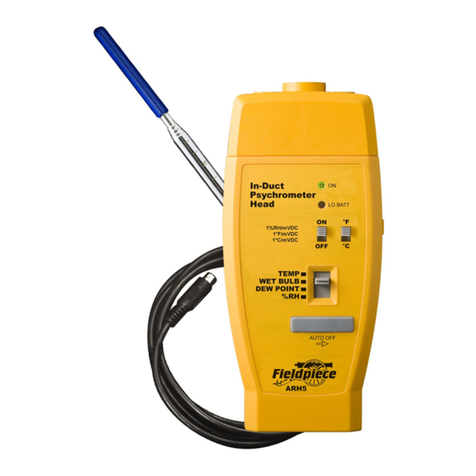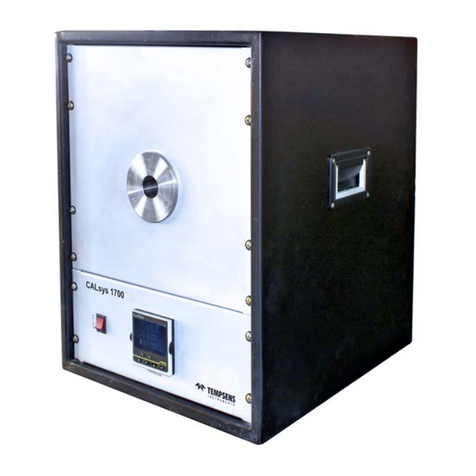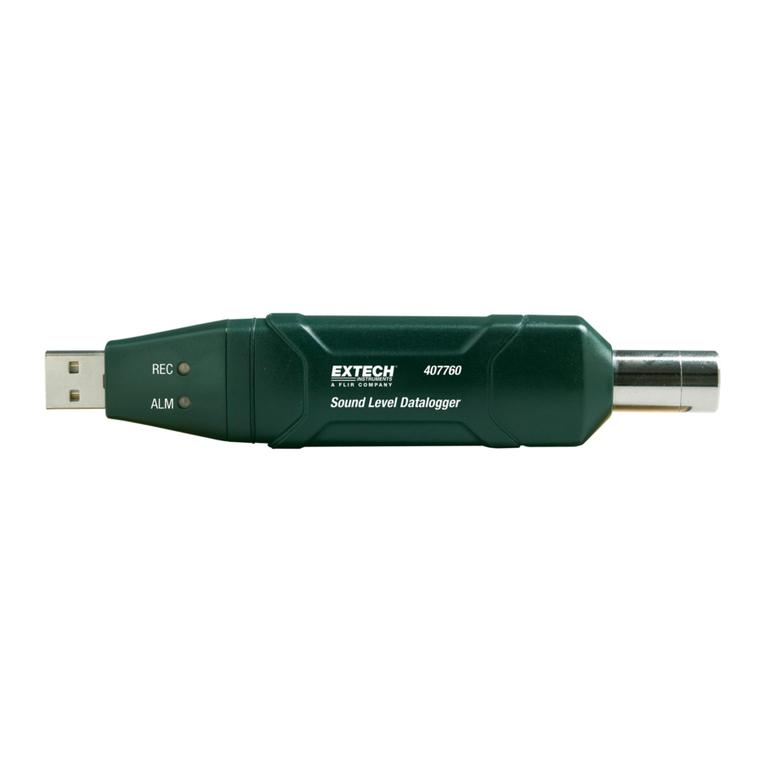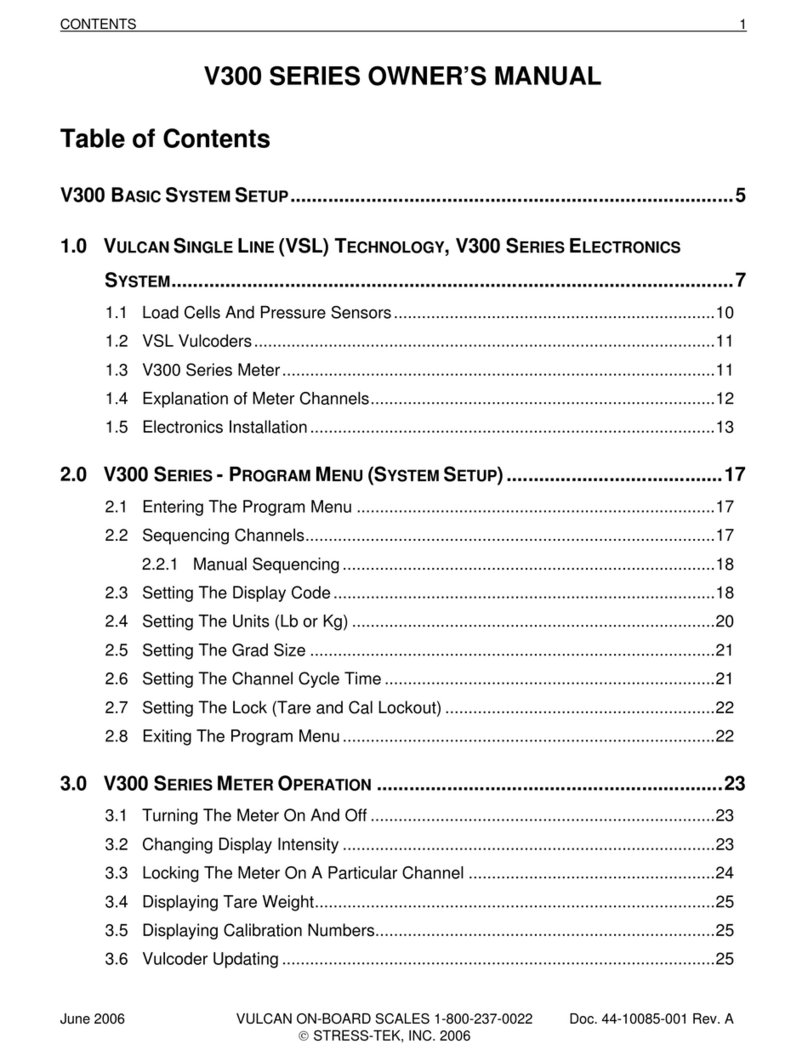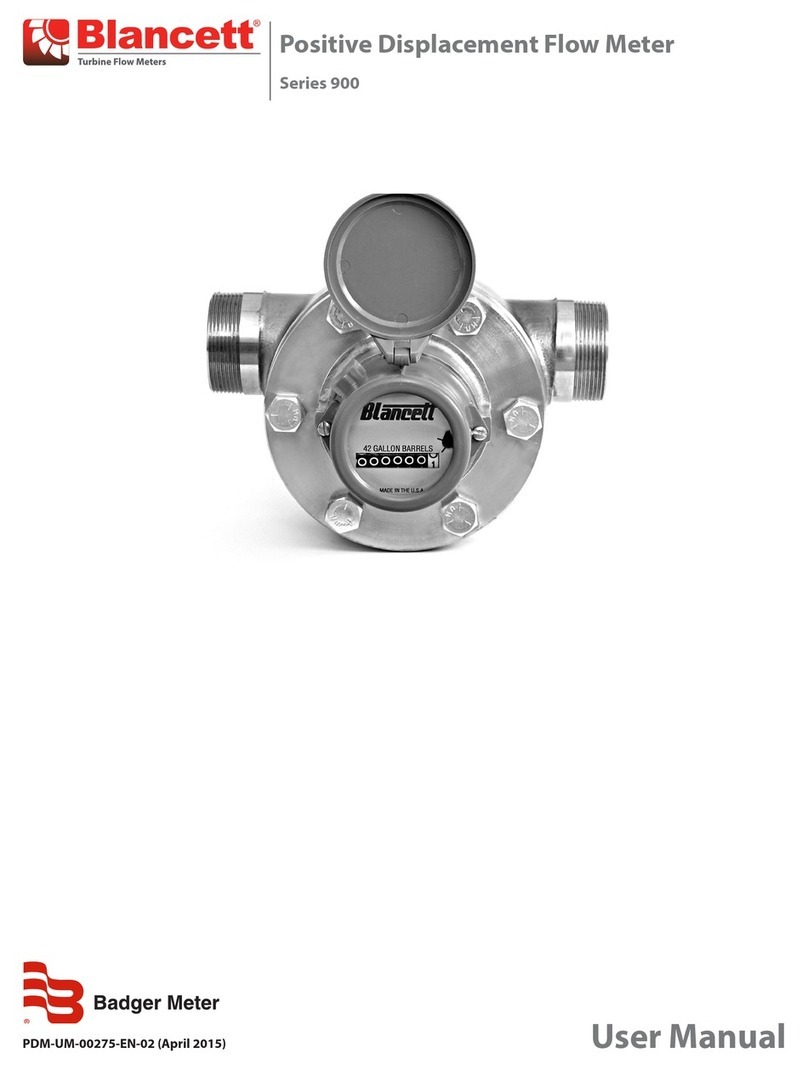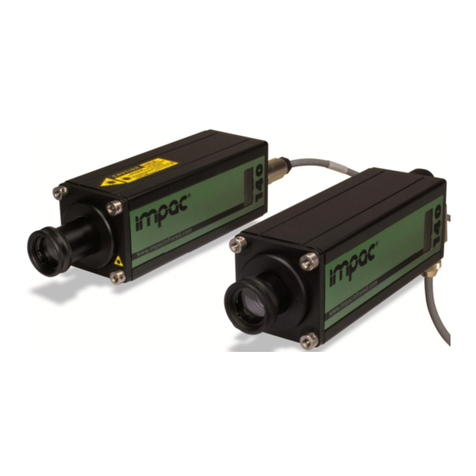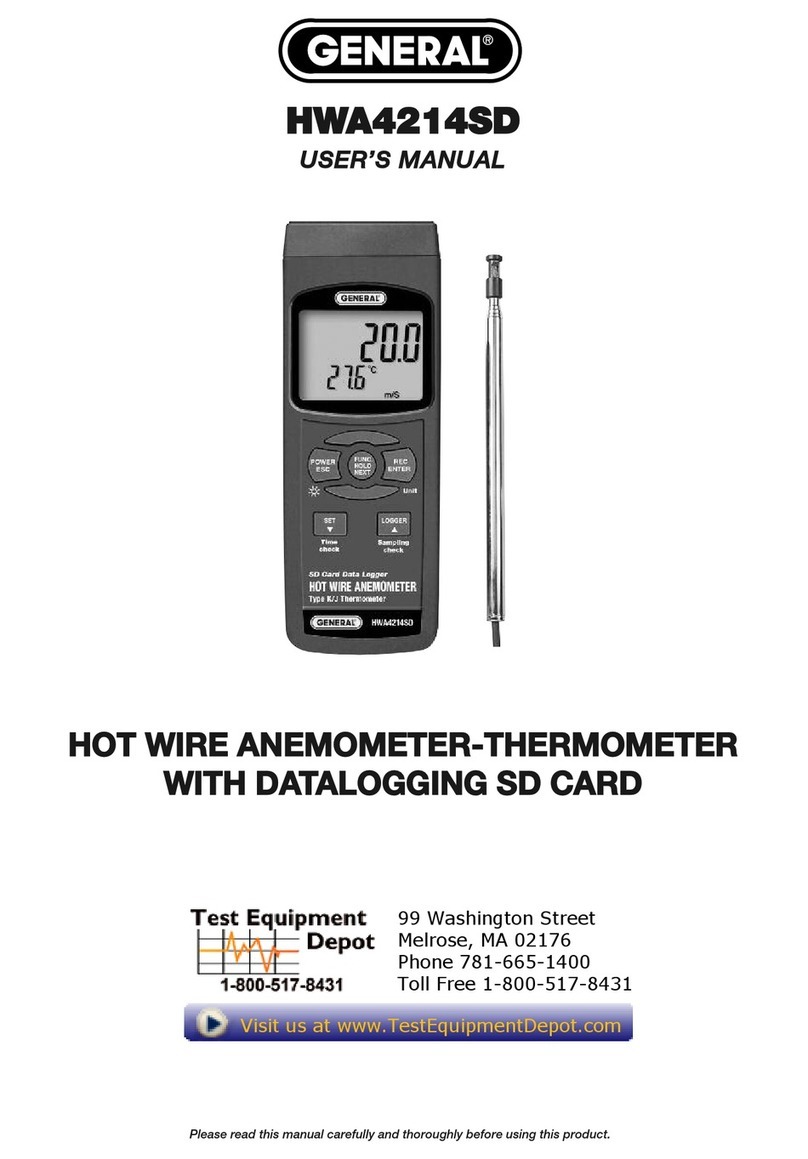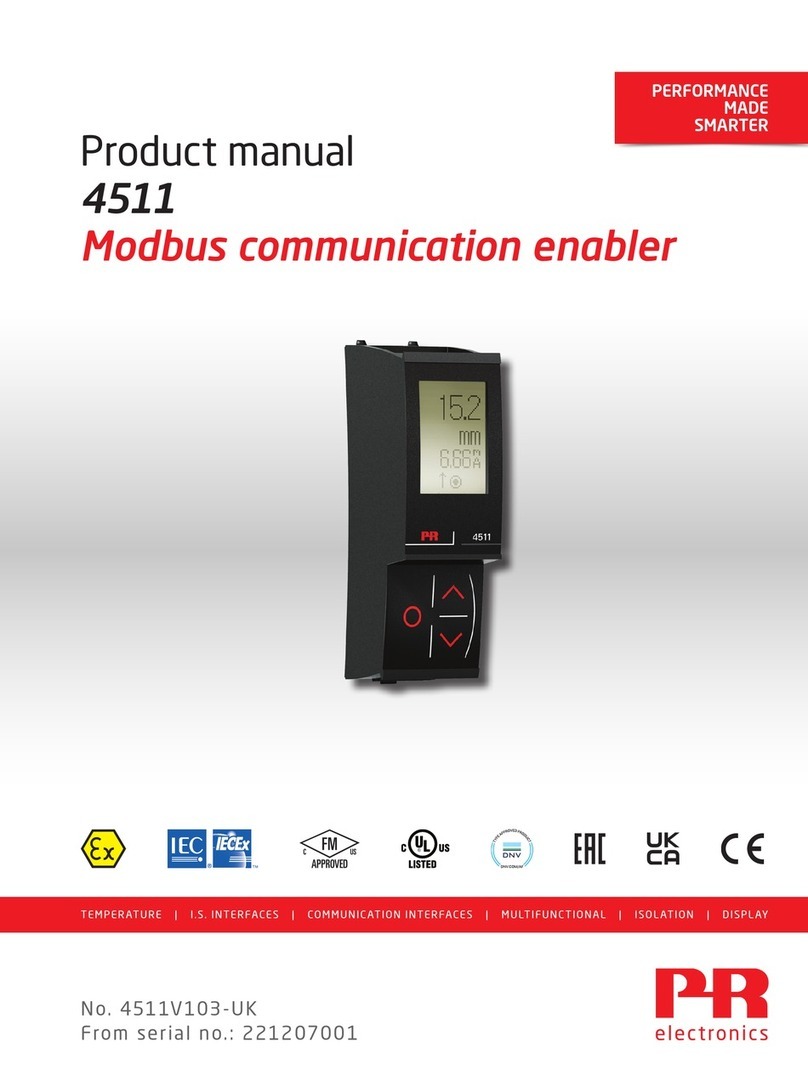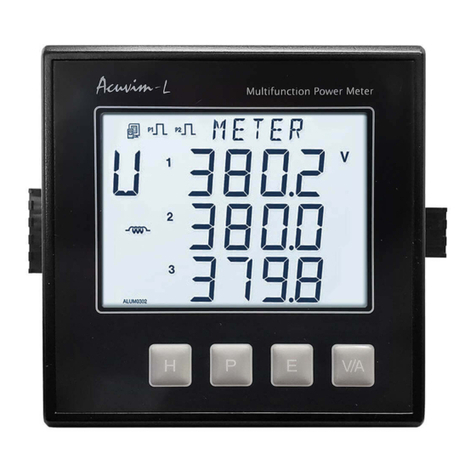EUCOL U2829 Series User manual

O
OP
PE
ER
RA
AT
TI
IO
ON
N
M
MA
AN
NU
UA
AL
L
U2829 Series
C
C
Ch
h
ha
a
an
n
ng
g
gz
z
zh
h
ho
o
ou
u
u
E
E
Eu
u
uc
c
co
o
ol
l
l
E
E
El
l
le
e
ec
c
ct
t
tr
r
ro
o
on
n
ni
i
ic
c
c
T
T
Te
e
ec
c
ch
h
hn
n
no
o
ol
l
lo
o
og
g
gy
y
y
C
C
Co
o
o.
.
.
,
,
,
L
L
Lt
t
td
d
d.
.
.
A
A
Ad
d
dd
d
d:
:
:No.1, North Qiyang Road, Tianning District, Changzhou, Jiangsu
T
T
Te
e
el
l
l:
:
:(
(
(0
0
05
5
51
1
19
9
9)
)
)8
8
85
5
55
5
50
0
05
5
51
1
19
9
99
9
9
F
F
Fa
a
ax
x
x:
:
:(
(
(0
0
05
5
51
1
19
9
9)
)
)8
8
85
5
55
5
50
0
05
5
51
1
16
6
69
9
9
E
E
E-
-
-m
m
ma
a
ai
i
il
l
l:
:
:
S
S
Sa
a
al
l
le
e
es
s
s@
@
@e
e
eu
u
uc
c
co
o
ol
l
l.
.
.c
c
co
o
om
m
m.
.
.c
c
cn
n
n
W
W
We
e
eb
b
bs
s
si
i
it
t
te
e
e:
:
:
h
h
ht
t
tt
t
tp
p
p:
:
:/
/
//
/
/
w
w
ww
w
ww
w
w.
.
.e
e
eu
u
uc
c
co
o
ol
l
l.
.
.c
c
co
o
om
m
m.
.
.c
c
cn
n
n

U2829 Series Operation Manual Contents
II
Contents
Chapter 1Out of Box Audit .......................................................................................................... 1
1.1To Inspect the package ................................................................................................. 1
1.2Power connection ......................................................................................................... 1
1.3Fuse .............................................................................................................................. 1
1.4Environment ................................................................................................................. 2
1.5Use of Test Fixture ....................................................................................................... 2
1.6Warm-up ....................................................................................................................... 2
1.7Other features ............................................................................................................... 3
Chapter 2Introduction .................................................................................................................. 4
2.1Introduction to front panel ........................................................................................... 4
2.2Introduction to rear panel ............................................................................................. 6
2.3Introduction to display zone ......................................................................................... 7
2.4Main menu keys and corresponding displayed pages .................................................. 7
2.4.1[MEAS] ................................................................................................................ 7
2.4.2[SETUP] ............................................................................................................... 8
2.4.3[SYSTEM] ........................................................................................................... 9
2.5Basic Operation ............................................................................................................ 9
2.6Start the instrument ...................................................................................................... 9
Chapter 3Introduction to [DISP] ....................................................................................... 11
3.1<MEAS DISPLAY> ............................................................................................... 11
3.1.1Test function ....................................................................................................... 12
3.1.2Test range ........................................................................................................... 13
3.1.3Test frequency .................................................................................................... 14
3.1.4Test level ............................................................................................................ 15
3.1.5DC bias ............................................................................................................... 16
3.1.6Test speed ........................................................................................................... 16
3.1.7Tools ................................................................................................................... 17
3.2<BIN DISPLAY> ....................................................................................................... 17
3.2.1Comparator function .......................................................................................... 18
3.2.2FUNC ................................................................................................................. 19
3.2.3NOMINAL ......................................................................................................... 19
3.2.4BIN ..................................................................................................................... 19
3.2.5HIGH/LOW........................................................................................................ 19
3.2.6COUNT .............................................................................................................. 19
3.2.7AUX ................................................................................................................... 19
3.2.8OUT ................................................................................................................... 19
3.3<LIST SWEEP DISP> ......................................................................................... 20
3.3.1Sweep mode ....................................................................................................... 21
3.3.2FREQ (Hz) ......................................................................................................... 21
3.3.3Ls[H] Q[ ] ........................................................................................................... 21
3.3.4COMP (Compare) .............................................................................................. 22
3.4<MEASURE SETUP> ............................................................................................... 22

U2829 Series Operation Manual Contents
III
3.4.1Trigger mode ...................................................................................................... 23
3.4.2Auto level control function ................................................................................ 24
3.4.3Bias current isolation function ........................................................................... 24
3.4.4Average .............................................................................................................. 25
3.4.5Level monitor function ....................................................................................... 25
3.4.6Delay time .......................................................................................................... 26
3.4.7Output impedance .............................................................................................. 26
3.4.8Deviation test function ....................................................................................... 27
3.5<CORRECTION> ...................................................................................................... 28
3.5.1OPEN ................................................................................................................. 29
3.5.2SHORT ............................................................................................................... 30
3.5.3LOAD ................................................................................................................. 31
3.5.4Load correction test function .............................................................................. 33
3.5.5Cable length selection ........................................................................................ 34
3.5.6Single/ multi correction mode ............................................................................ 34
3.6<LIMIT TABLE> .................................................................................................... 34
3.6.1Swap parameter .................................................................................................. 35
3.6.2Limit modes of compare function ...................................................................... 35
3.6.3Set nominal value of tolerance mode ................................................................. 36
3.6.4Comparator function ON/OFF ........................................................................... 37
3.6.5Auxiliary bin ON/OFF ....................................................................................... 37
3.6.6HIGH/LOW........................................................................................................ 38
3.7<LIST SETUP> ...................................................................................................... 39
3.7.1MODE ................................................................................................................ 40
3.7.2Test parameter .................................................................................................... 40
3.7.3Sweep parameter setup ....................................................................................... 40
Chapter 4[SYSTEM] and <FILE MANAGE> .................................................................... 41
4.1<SYSTEM SETUP> .................................................................................................. 41
4.1.1MAIN FUNC ..................................................................................................... 41
4.1.2ON BEEPERS .................................................................................................... 42
4.1.3PASS BEEP ........................................................................................................ 42
4.1.4FAIL BEEP ........................................................................................................ 42
4.1.5LANGUAGE...................................................................................................... 43
4.1.6PASS WORD ..................................................................................................... 43
4.1.7BUS MODE (Reserved function) ...................................................................... 44
4.1.8BUS ADDR (Reserved function) ....................................................................... 44
4.1.9FETCH MODE .................................................................................................. 44
4.1.10BIAS SRC .......................................................................................................... 45
4.1.11BAUD RATE ..................................................................................................... 45
4.1.12DATA/TIME ...................................................................................................... 46
4.1.13SYSTEM INFORMATION................................................................................ 46
4.1.14FIRMWARE UPDATE ...................................................................................... 46
4.1.15SYSTEM TEST ................................................................................................. 47
4.2LCR <FILE MANAGE> ........................................................................................ 48

U2829 Series Operation Manual Contents
IV
4.2.1Setup file for single-group component (*.STA) ................................................. 48
4.2.2U-disk manage performance .............................................................................. 50
4.2.3Operation steps for file management.................................................................. 50
Chapter 5Execute LCR operation and some examples .............................................................. 52
5.1Correction operation ................................................................................................... 52
5.1.1Sweep correction ................................................................................................ 52
5.1.2Point-frequency correction ................................................................................. 52
5.2Correct connection of DUT ........................................................................................ 53
5.3Eliminate the influence of stray impedance ............................................................... 54
5.4Operation example for testing inductance with U2829 .............................................. 56
5.5Operation example of testing capacitance by multi-frequency list sweep ................. 57
5.6Operation example of load correction ........................................................................ 60
Chapter 6Performance and Test ................................................................................................. 62
6.1Test function ............................................................................................................... 62
6.1.1Parameter and symbol ............................................................................... 62
6.1.2Test combination .......................................................................................... 62
6.1.3Mathematical operation ............................................................................. 62
6.1.4Equivalent mode .......................................................................................... 62
6.1.5Range ............................................................................................................... 62
6.1.6Trigger .............................................................................................................. 62
6.1.7Delay time ...................................................................................................... 63
6.1.8Connection modes of test terminals..................................................... 63
6.1.9Test speed (Frequency>=10kHz) .......................................................... 63
6.1.10Average ................................................................................................... 63
6.1.11Display digit ........................................................................................... 63
6.2Test signal .................................................................................................................. 6 3
6.2.1Test signal frequency ................................................................................. 63
6.2.2Signal mode ................................................................................................... 64
6.2.3Test signal level ............................................................................................ 64
6.2.4Output impedance ....................................................................................... 64
6.2.5Monitor for test signal level ..................................................................... 64
6.2.6Maximum measurement display range ............................................... 64
6.2.7DC bias voltage source .............................................................................. 65
6.2.8Diode test ....................................................................................................... 65
6.3Measurement accuracy ............................................................................................... 65
6.3.1Accuracies of │Z│,│Y│, L, C, R, X, G, B........................................ 65
6.3.2Accuracy of D ................................................................................................ 66
6.3.3Accuracy of Q ................................................................................................ 66
6.3.4Accuracy of θ ................................................................................................. 66
6.3.5Accuracy of G ................................................................................................ 66
6.3.6Accuracy of Rp .............................................................................................. 67
6.3.7The accuracy of Rs ...................................................................................... 67
6.3.8Accuracy factor ............................................................................................. 67
6.3.9Accuracy of DCR ........................................................................................... 70

U2829 Series Operation Manual Contents
V
6.3.10Accuracy of leakage inductance Lk ............................................... 70
6.3.11Accuracy of the rate of Turns to Ratio ......................................... 70
6.4Safety requirement ..................................................................................................... 71
6.4.1Insulation resistance .................................................................................. 71
6.4.2Insulation intensity ..................................................................................... 71
6.4.3Leakage current ........................................................................................... 71
6.5Electromagnetic compatibility ................................................................................... 71
6.6Performance test ......................................................................................................... 71
6.6.1Working condition ........................................................................................ 71
6.6.2The used instruments and devices ....................................................... 71
6.6.3Function check .............................................................................................. 72
6.6.4Test signal level ............................................................................................ 72
6.6.5Frequency ....................................................................................................... 72
6.6.6Measurement accuracy .............................................................................. 73
6.6.7Accuracy of C and D ................................................................................... 73
6.6.8Accuracy of L ................................................................................................. 73
6.6.9Accuracy of Z ................................................................................................ 73
6.6.10Accuracy of DCR ................................................................................... 74
Chapter 7Command Reference .......................................................................................... 75
7.1Subsystem commands for U2829 ................................................................. 75
7.1.1DISPlay subsystem commands .............................................................. 7 5
7.1.2FREQuency subsystem commands ....................................................... 78
7.1.3VOLTage subsystem commands ............................................................. 78
7.1.4CURRent subsystem commands ............................................................ 78
7.1.5AMPLitude subsystem commands ......................................................... 79
7.1.6Output RESister subsystem commands .............................................. 79
7.1.7OUTPut subsystem commands ............................................................... 80
7.1.8BIAS subsystem commands .................................................................... 81
7.1.9FUNCtion subsystem commands ........................................................... 82
7.1.10LIST subsystem commands ............................................................. 86
7.1.11APERture subsystem commands ................................................... 89
7.1.12TRIGger subsystem commands ..................................................... 90
7.1.13FETCh? subsystem commands ....................................................... 91
7.1.14CORRection subsystem commands............................................... 94
7.1.15COMParator subsystem commands ............................................ 100
7.1.16Mass MEMory subsystem commands ......................................... 105
7.1.17TRAN subsystem commands ......................................................... 105
7.2GPIB Common Commands ............................................................................. 115
Announcement
The description of the manual may not cover all contents of the instrument, and
our company is subject to change and to improve the performance, function,
inner structure, appearance, accessory and package of the instrument without
notice. If there is puzzle caused by inconsistency of manual and instrument, then
you can contact with our company by the address on the cover.

U2829 Series Operation Manual Chapter 1 Out of Box Audit
1
Chapter 1 Out of Box Audit
When you receive the instrument, some inspections are necessary, and the
condition must be understood and available before installing the instrument.
1.1 To Inspect the package
Inspect the shipping container for damage after unpacking it. It is not
recommended to power on the instrument in the case of a damaged container.
If the contents in the container do not conform to the packing list, notify us or
your dealer.
1.2 Power connection
1) Power-supplying voltage range: 100~120Vac or 198~242Vac. Being related
with the power setup on the rear panel.
2) Power-supplying frequency range: 47~63Hz.
3) Power-supplying power range: less than 80VA.
4) Power supplying input phase line L, zero line N, ground lead E should be as
same as the power plug of the instrument.
5) After careful design, the instrument can reduce the clutter jamming caused
by AC power terminal input, however, it should be used under the
environment with low-noise. Please install power filter if being unavoidable.
———————————————————————————————————————
Warning: In order to prevent user and instrument from being hurt by
leakage, it is necessary for user to guarantee the ground line of supply
power being reliably grounded.
———————————————————————————————————————
1.3 Fuse
The instrument has installed fuse, so operators should use the installed fuse of
our company.
———————————————————————————————————————
Warning: Be sure that the location of fuse is consistent with
power-supplying voltage range before charging.
———————————————————————————————————————

U2829 Series Operation Manual Chapter 1 Out of Box Audit
2
1.4 Environment
1) Please do not operate the instrument in the place that is vibrative, dusty,
under direct sunlight or where there is corrosive air.
2) The normal working temperature is 0℃~40℃, relative humidity ≤75%, so
the instrument should be used under above condition to guarantee the
accuracy.
3) There is heat abstractor on the rear panel to avoid the inner temperature
rising. In order to keep good airiness, please don’t obstruct the left and right
airiness holes to make the instrument maintain the accuracy.
4) Although the instrument has been specially designed for reducing the noise
caused by ac power, a place with low noise is still recommended. If this
cannot be arranged, please make sure to use power filter for the instrument.
5) Please store the instrument in the place where temperature is between 5℃
and 40℃, humidity is less than 85%RH. If the instrument will not be put in
use for a time, please have it properly packed with its original box or a similar
box for storing.
6) The instrument, especially the test cable should be far from strong
electro-magnetic field, to avoid the jamming on measurement.
1.5 Use of Test Fixture
Please use the accessory test fixture or cable, the test fixture made by user or
from other company may cause the incorrect measurement result. The
test fixture or cable should be kept clean, as well as the pin of DUT, thus to
guarantee the good connection between DUT and fixture.
Connect the fixture or cable to four test terminals Hcur, Hpot, Lcur, Lpot on the
front panel. As for the DUT with shielding shell, connect shielding layer or ground
“┴”.
Note: When test fixture or cable has not being installed, the instrument will
display an unstable test result.
1.6 Warm-up
1) To guarantee the accurate measurement, the warm-up time is no less than
15min.
2) Please not turn on or off instrument frequently, in order to avoid the inner
data fluster.

U2829 Series Operation Manual Chapter 1 Out of Box Audit
3
1.7 Other features
1) Power: consumption power≤80VA.
2) Dimension (W*H*D): 400mm*132mm*350mm
3) Weight: About 10kg.

U2829 Series Operation Manual Chapter 2 Introduction
4
Chapter 2 Introduction
In this chapter, the basic operation features of U2829 series are described. Please
read the content carefully before using U2829 series instruments, thus you can
learn the operation of U2829.
2.1 Introduction to front panel
Figure 2-1 shows the front panel of U2829.
1) POWER
Power switch
2) LCD
800*480 colorful TFT LCD displays measurement results and conditions.
3) [CLEAR]
Execute the calibration operation. Press this key to execute OPEN/SHORT
calibration.
4) Soft keys
Six soft keys are used to select parameters. The corresponding function of
each soft key has been displayed on its left (the right part of LCD). The
function definition varies with different pages.
5) Ground terminal
The ground terminal is connected with the case of instrument, which can be
used to protect or shield the ground connection.
6) Test terminals (UNKNOWN)
4-teminal test pair are used to connect 4-terminal test fixture or cable to
measure DUT.
The 4 terminals are respectively as follows: Hcur, Hpot, Lpot and Lcur.
7) Transformer secondary test terminal (TURNS)
(+): Secondary (+) terminal
(-): Secondary (-) terminal

U2829 Series Operation Manual Chapter 2 Introduction
5
8) [TRIG]
When the trigger mode is set to MAN mode, press this key to trigger the
instrument.
9) [RESET]
Press this key, when transformer auto scanning is cancelled, other operation
cannot be executed on other pages.
10) PASS indicator and FAIL indicator
LED indicator shows the test result has passed or failed.
11) Numerical keys
These keys are used to input data to the instrument. The key consists of
numerical keys [0] to [9], decimal point [.], [+/-],[ESC],[←] and [ENTER]
key.
12) [MEAS]
Press this key to enter into the display page of transformer scanning test.
[SETUP]
Press this key to enter into the setup page of transformer scanning test.
[SYSTEM] Press this key to enter into the system setup page.
[FILE] Press this key to enter into the file list page.
13) CURSOR
This key is used to move the cursor on the LCD displayed page. When the
cursor moves to a zone, the corresponding zone will be lightened.
14) Knob for menu selection and numeric input
This knob is used to move the cursor, select and set parameters.
15) [SAVE]
Copy the currently displayed page to USB memory.
16) Brand and model
Brand and model
17) USB HOST interface
Connect U flash disk so as to save or use a specified file.
18) [KEYLOCK]
Press [KEYLOCK], it will be lighted, which means the function of current panel
is locked. Press it again, it will be off, which means discharging the lock status.
If the password function is ON, it means correct password is necessary when
discharging the key-lock, or the key cannot be unlocked.
19) [DC SOURCE]
This key is used to permit or forbid the output of a 10V individual voltage
source.
20) [DC BIAS]
[DC BIAS] is used to permit or forbid the output of 0-100mA/10V DC bias
source. Press this key, it will be lighted which means DC bias output is
permitted. Press this key once more, it will be off which means DC bias output
is prohibited. The key is useless in some pages where the DC BIAS cannot be
added.

U2829 Series Operation Manual Chapter 2 Introduction
6
2.2 Introduction to rear panel
Figure 2-2 shows the rear panel of U2829.
Figure 2-2 Rear panel
1) SCANNER interface
Control the transformer scanning box through SCANNER interface.
2) IEEE-488 interface
The tester can communicate with PC through GPIB interface.
3) HANDLER interface
Handler interface is used to realize the sorting output of test results.
4) EX.TRG interface
External trigger signal, foot switch(optional) can be used to trigger
measurement when the trigger source is EXT.
5) RS232 interface
Series communication interface can realize the communication with PC.
6) USB DEVICE interface
The tester can communicate with PC through the USB DEVICE interface.
7) Bar-code scanner interface
The tester can be connected to a bar-code scanner.
8) Nameplate
Information about production date, instrument number and manufacturer
etc..
9) Ground terminal
The ground terminal is connected with instrument casing, being available for
protecting or shielding ground connection.
10) Fan window
Heat elimination, maintaining the normal working temperature

U2829 Series Operation Manual Chapter 2 Introduction
7
11) Power socket and Fuse base
Input AC power and being used to install power fuse, protect instrument.
2.3 Introduction to display zone
U2829 applies a 65k, 7-inch TFT display. The display screen is divided into the
following zones:
1
4 3 2
Figure 2-3 display zones
1) Display page name
Indicate the name of the currently displayed page.
2) Soft keys
The zone is used to display the function definition of soft key. The definition of
soft key can be different as the difference of cursor’s direction in the zone.
3) Test result/ condition display zone
In this zone, test result information and current condition are displayed.
4) Help
In this zone, information about system and user data input is displayed.
2.4 Main menu keys and corresponding displayed
pages
2.4.1 [MEAS]
When the LCR function is active, press this key [MEAS] to enter into the LCR

U2829 Series Operation Manual Chapter 2 Introduction
8
measurement display page, the following soft keys will be displayed in the soft
key zone.
<MEAS DISPLAY>
<BIN DISPLAY>
<PASS FAIL>
<LIST SWEEP>
<GRAPH SWEEP>
When the transformer measurement function is active, press this key-[MEAS],
the following soft keys will be displayed on the transformer measurement display
page.
< MEAS DISP>
<JUDGE DISP>
<MEAS SETUP>
<LIMIT SETUP>
When the transformer scan function is active, press this key-[MEAS], the
following soft keys will be displayed on the transformer scan display page.
<LOAD STD.>
<DEVIATION>
<SPEED>
<PRI.1>
<TEST FAIL>
2.4.2 [SETUP]
When the LCR function is active, press this key-[SETUP], the following soft keys
will be displayed in the soft key zone on the LCR measurement setup page.
<MEAS SETUP>
<CORRECTION>
<LIMIT TABLE>
<LIST SETUP>
<GRAPH SETUP>
When the transformer measurement function is active, press this key-[SETUP],
the following soft keys will be displayed on the transformer measurement setup
page.
<MEAS SETUP>
<LIMIT SETUP>
<CORRECTION>
<MEAS DISP>
<JUDGE DISP>
When the transformer scan function is active, press this key-[SETUP], the
following soft keys will be displayed on the transformer scan setup page.
<TRANS ID>
<PIN SETUP>
<TEST CONDITION>

U2829 Series Operation Manual Chapter 2 Introduction
9
<STAT.>
<SCAN MEAS>
2.4.3 [SYSTEM]
This key-[SYSTEM] is used to enter into the system setup page. The following
soft keys will be available:
<SYSTEM SETUP>
<SYSTEM INFO>
<FIRMWARE UPDATE>
<SYSTEM TEST>
2.5 Basic Operation
Basic operation of U2829 is as follows:
Use menu keys ([MEAS], SETUP], [SYSTEM]) and soft keys to select the
desired page.
Use cursor keys ([←][→]) and the slide switch to move the cursor to the
desired zone. When the cursor moves to a specified zone, the zone will
become reverse expression.
The soft key functions corresponding to the current zone of the cursor will be
displayed in the soft key zone. Users can select and use the desired key.
Numeric keys, [BACKSPACE] and [ENTER] are used to input data.
When a numeric key is pressed down, the usable unit soft key will be
displayed in the soft key zone. You can choose a unit soft key or press [ENTER]
to end data inputting. When [ENTER] is used to terminate data inputting, the
unit of data will be set to a default unit, such as Hz, V or A. For example, the
default unit for frequency is Hz.
2.6 Start the instrument
Plug in 3-line power plug.
Caution: Keep the power-supply voltage and frequency conform to above
specifications. Power input phase line L, zero line N, ground line E should be the
same as that of the instrument.
Press the power switch at the left corner on the front panel and then a boot screen
will appear which displays our company logo, instrument model (U2829), and the
version number of the software (Ver1.0.0).

U2829 Series Operation Manual Chapter 2 Introduction
10
If the password protection function is on, users are required to input the
password and then press [ENTER] to enter into the page of main menu.
———————————————————————————————————————
Note: The instrument has a default password-123456. In your practical use,
you can change it and set your own one. Please see <SYSTEM> section for more
information.

U2829 Series Operation Manual Chapter 3 Introduction to [DISP]
11
Chapter 3 Introduction to [DISP]
3.1 <MEAS DISPLAY>
When the LCR function is applied, press [MEAS], the <MEAS DISPLAY> page will
be displayed on screen as shown in the following figure.
U2829-301
On this page, the test result is displayed in upper-case character. The
measurement control parameters can be set in this page:
Test function (FUNC A-B)
Test frequency (FREQ)
Test level (LEVEL)
Test function (FUNC C)
Test range (RANGE )
DC bias
Test speed (SPEED)
Test function (FUNC D)
There are 8 zones in this page: FUNC A-B, FUNC C, FUNC D, FREQ, LEVEL, RANG,
SPEED, DC BIAS. The details will be discussed later.
The test result/ condition display zone shows the information about test condition.
These conditions can be set on <Measure> page or <Correction> page.
Signal source voltage/ current monitor (Vm, Im)
Open, short, load correction ON/OFF status (CORR)

U2829 Series Operation Manual Chapter 3 Introduction to [DISP]
12
3.1.1 Test function
In a measurement period, U2829 can test four parameters for an impedance
component: two primary parameters and two secondary parameters. Parameters
that can be tested are as follows:
Primary parameters
|Z| (Module of impedance)
|Y| (Module of admittance)
L (Inductance)
C (Capacitance)
R (Resistance)
G (Conductance)
DCR (DC resistance)
Secondary Parameters
D (Dissipation factor)
Q (Quality factor)
Rs (Equivalent Series Resistance ESR)
Rp (Equivalent Parallel Resistance)
X (Reactance)
B (Admittance)
θ(Phase Angle)
Test results of primary and secondary parameters are respectively displayed in
two lines in the form of upper-case characters. The primary parameter displays in
the upper line while the secondary parameter displays in the lower line.
Operation steps for setting test function:
1) Move the cursor to FUNC A-B zone, the following soft keys will be displayed on
the screen.
Cp—…→
Cs—…→
Lp—…→
Ls—…→
Z—…→
Y—…→
2) Press the soft key corresponding to Cp—…→, the following parameters will be
shown for your choice.
Cp-D
Cp-Q
Cp-G
Cp-Rp
RETURN
Press the soft key corresponding to your desired parameter. Then press RETURN
to return to upper soft key menu.
3) Press Cs—…→, the following parameters will be shown for your choice.
Cs-D

U2829 Series Operation Manual Chapter 3 Introduction to [DISP]
13
Cs-Q
Cs-Rs
RETURN
Press the soft key corresponding to your desired parameter. Then press RETURN
to return to upper soft key menu.
4) Press Lp—…→, the following parameters will be shown for your choice.
Lp-D
Lp-Q
Lp-G
Lp-Rp
RETURN
Press the soft key corresponding to your desired parameter. Then press RETURN
to return to upper soft key menu.
5) Press Ls—…→, the following parameters will be shown for your choice.
Ls-D
Ls-Q
Ls-Rs
DCR
RETURN
Press the soft key corresponding to your desired parameter. Then press RETURN
to return to upper soft key menu.
6) Press Z—…→, the following parameters will be shown for your choice.
Z-θr
Z-θº
R-X
Rp-Q
Rs-Q
RETURN
Press the soft key corresponding to your desired parameter. Then press RETURN
to return to upper soft key menu.
7) Press Y—…→, another group of soft keys will be shown.
Y—θr
R—θº
G—B
RETURN
Press the soft key corresponding to your desired parameter. Then press RETURN
to return to upper soft key menu.
Parameter setup of FUNC C and FUNC D are the same as that of FUNC A-B, but
FUNC C and FUNC D can be turned off (OFF).
3.1.2 Test range
Measurement range should be selected in accordance with the impedance value
of the tested LCR component.

U2829 Series Operation Manual Chapter 3 Introduction to [DISP]
14
U2829 has 8 AC measurement ranges: 10Ω, 100Ω, 300Ω, 1kΩ, 3kΩ, 10kΩ, 30kΩ,
100kΩ.
U2829 has 10 DCR measurement ranges: 100mΩ, 1Ω, 10Ω, 100Ω, 300Ω, 1kΩ,
3kΩ, 10kΩ, 30kΩ, 100kΩ.
Operation steps for setting test range:
1) Move the cursor to the range zone, the following soft keys will be displayed:
AUTO The soft key is used to set the range mode to AUTO.
HOLD The soft key is used to switch the AUTO mode to the HOLD mode.
When the range mode is set to HOLD, the range will be locked in the
current measurement range. The current measurement range will be
displayed in the range zone.
↑(+) The soft key is used to increase the range under HOLD mode.
↓(-) The soft key is used to decrease the range under HOLD mode.
2) Use soft keys to set measurement range.
3.1.3 Test frequency
The measurement range of U2829 ranges from 20Hz to 500KHz with an increase
or decrease of 0.01Hz. When the test function is set as DCR, the FREQ zone will
display “---”.
Operation steps for setting test frequency:
U2829 provides two methods to set measurement frequency. The first one is to
use soft keys and the other one is to input data by using numeric keys.
1) Move the cursor to the FREQ zone, the following soft keys will be displayed.
↑(++)
This is a coarse adjustment soft key used to increase the frequency. Press
this key, the frequency will change as the following sequence: 20Hz,
100Hz, 1kHz, 10kHz, 100kHz, 200kHz.
↑(+)
This is a fine adjustment soft key used to increase the frequency. Press
this key, the frequency will switch between the following ones:
20 Hz 100 Hz 1 kHz 10 kHz 100 kHz
25 Hz 120 Hz 1.2 kHz 12 kHz 120 kHz
30 Hz 150 Hz 1.5 kHz 15 kHz 150 kHz
40 Hz 200 Hz 2 kHz 20 kHz 200 kHz
50 Hz 250 Hz 2.5 kHz 25 kHz 250 kHz
60 Hz 300 Hz 3 kHz 30 kHz 300 kHz
80 Hz 400 Hz 4 kHz 40 kHz 400 kHz
500 Hz 5 kHz 50 kHz 500 kHz
600 Hz 6 kHz 60 kHz
800 Hz 8 kHz 80 kHz
↓(-)
This is a fine adjustment soft key used to decrease the frequency. The

U2829 Series Operation Manual Chapter 3 Introduction to [DISP]
15
selectable frequencies are the same as that of ↑(+).
↓(--)
This is a coarse adjustment soft key used to decrease the frequency. The
selectable frequencies are the same as that of ↑(++).
2) Use soft keys or numeric keys to select or set frequency. When using numeric
keys to input the required frequency value, the soft key displays the available
frequency units (Hz, kHz and MHz). You can use unit soft key to input unit and
data. When using [ENTER] to input frequency, the default unit is Hz.
3.1.4 Test level
The measurement level of U2829 can be set according to the RMS value of sine
wave signal. The frequency of sine wave signal is the test frequency which is
generated by inner oscillator. You can set measurement voltage or current. The
output impedance of U2829 signal source can be 10Ω, 25Ω, 50Ωor 100Ω.When
the test function is DCR, the FREQ zone will display “---”.
———————————————————————————————————————
Note: The measurement current is the output one when the tested
terminal is short, while the measurement voltage is the output one when
the tested terminal is open.
———————————————————————————————————————
The auto level control function of U2829 can realize the measurement of constant
voltage or current. The auto level control function (ALC) can be set as ON in
<MEAS> page. When the auto level control function is set to ON, “*” will be
displayed following the current level value. Refer to <MEAS> for more
information.
Operation steps for setting test level:
U2829 provides two methods to set the level of test signal source. The first one is
to use soft keys, while the second one is to input data by numeric keys.
1) Move the cursor to LEVEL, the following soft keys will be displayed.
↑(+)
This soft key is used to increase the level of test signal source.
↓(-)
This soft key is used to decrease the level of test signal source.
2) Soft or numeric keys are used to select or set the test level. When numeric
keys are used to input the desired level, the available units (mV, V, µA, mA
and A) will be displayed in the soft key zone. Users can use these unit keys to
input unit and data. When [ENTER] is used to terminate the input of level, the
default level is V or A.
———————————————————————————————————————
NOTE: When you need to switch the level between current and voltage,
numeric keys and unit soft keys must be used.
This manual suits for next models
1
Table of contents
Other EUCOL Measuring Instrument manuals
Popular Measuring Instrument manuals by other brands
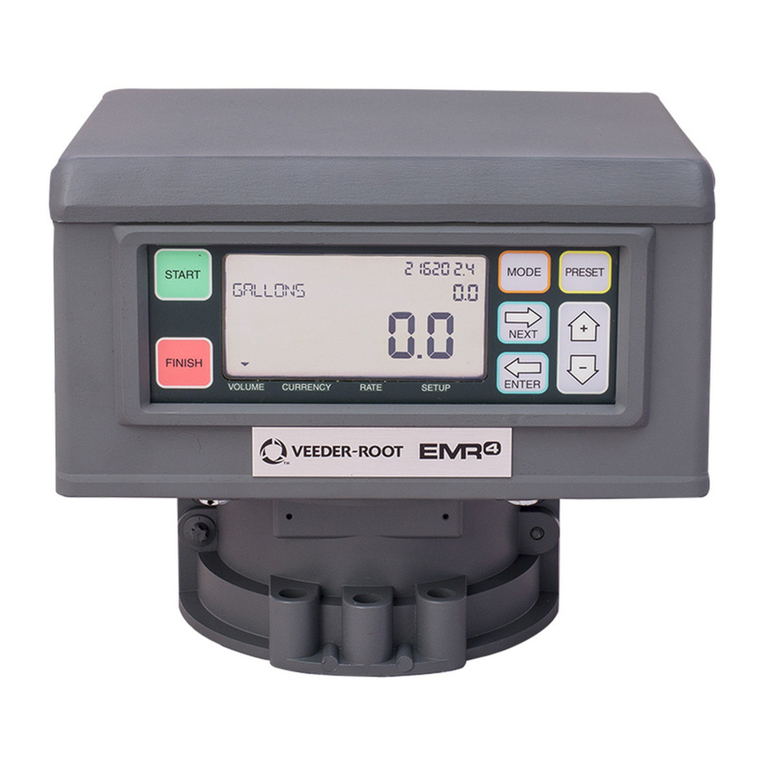
Veeder-Root
Veeder-Root EMR4 Application guide

Hamamatsu
Hamamatsu ENERGETIQ LDLS EQ-400 Operation manual

PCE Instruments
PCE Instruments PCE-CSM 10 user manual
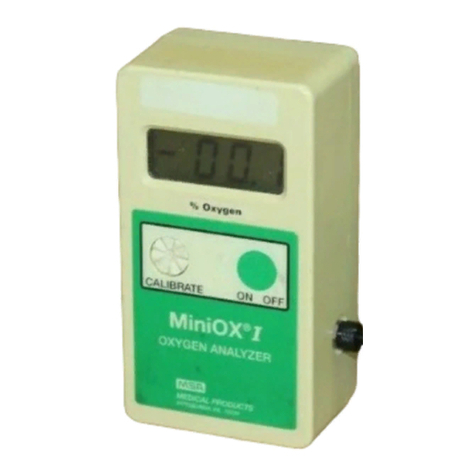
MSA
MSA MiniOx I operating manual
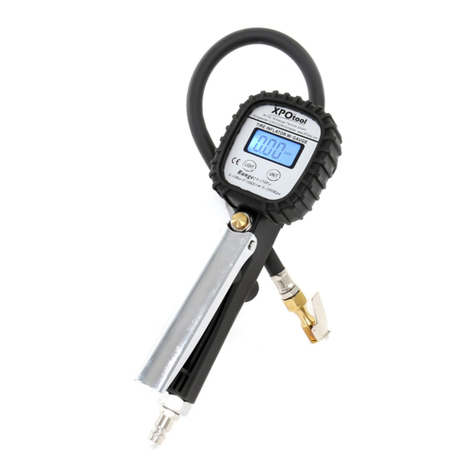
XPOtool
XPOtool 63039 Operation manual
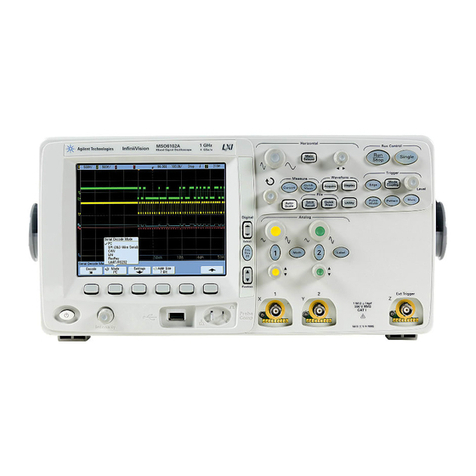
Agilent Technologies
Agilent Technologies InfiniiVision 6000 Series user guide
